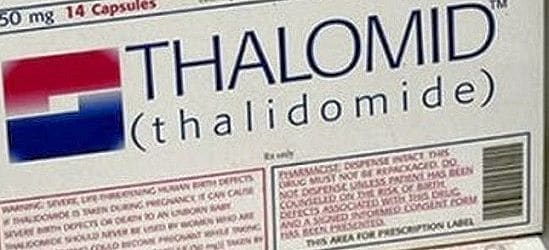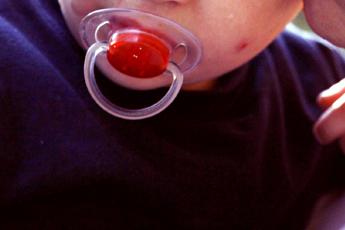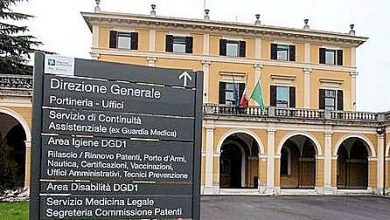
 “Some time ago, during an international congress on thalidomide, we victims of the drug carried out an experiment: we lined up, depending on the outcome of the molecule on our body determined by the stage of pregnancy in which our mothers had taken the fateful tablet. It was impressive for me, because I realized that if my mother had taken it just 8 hours before, I would also have been born without ears, in addition to the lesions on my limbs”.
“Some time ago, during an international congress on thalidomide, we victims of the drug carried out an experiment: we lined up, depending on the outcome of the molecule on our body determined by the stage of pregnancy in which our mothers had taken the fateful tablet. It was impressive for me, because I realized that if my mother had taken it just 8 hours before, I would also have been born without ears, in addition to the lesions on my limbs”.
Nadia Malavasi, honorary president of Tai onlus, the Italian thalidomide association, never mince words when she tells her story. And today in Milan, during a meeting promoted by Research4Life, an Italian science advocacy reality, and moderated by Francesco Brancati, president of Unamsi (National Medical Scientific Information Union), he returns to the drama experienced by many child victims of the drug that was used in the 50s and 60s by pregnant women for its hypnotic-sedative action, to limit the typical nausea of the first months and facilitate rest. After the case came to light, a long battle ensued. "But even now that compensation has finally been recognized for thalidomides born between 1959 and 1965, we need some more protection," he assures.
1961 was the boom year of the births of thalidomides in Europe and at the same time the year of the withdrawal from the market of the molecule in the Old Continent. "The numbers are still fluctuating: 20,000 is considered the minimum number of thalidomide births", 10,000 known cases "and counted by default" at the time of the publication of an important book on the subject, that of the biologist Trent Stephens (2001). Malavasi is the curator of the Italian edition – dated 2015 – of the volume signed by Stephens with Rock Brynner: 'The dark drug. The incidence of thalidomide and its resurgence as an essential medicine'.
"The case studies do not consider all abortions, voluntary and spontaneous", Malavasi points out, who in the introduction to the book writes, for example, that "many women from the Veneto region (indirect sources) and certainly beyond, were welcomed to have an abortion in private Swiss clinics ”. The story "was covered up from the beginning - he observes - In Italy, for example, a census of the victims has never been carried out, never a conference promoted by the Ministry of Health. Only in 2004 with the foundation of Tai onlus did discussions begin on a law that would give recognition to the pathology. Until then, it seemed that not a single malformed child had been born.
Then other measures followed, “until the recognition in 2008 of compensation for the victims. A solution launched in a hurry and with strange bands to classify the injured, but we took it as it came”. Those born between 1959 and 1965 receive the compensation, but there was a battle to extend the band to 1958 and 1966, because although the drug was no longer on the market there was still a residual use . The process of the provision that provides for the extension ran aground in the Senate "where some issues were being resolved", recalls Senator Emilia Grazia De Biasi, and where problems arose related to the financial aspects of the law. A supplementary investigation was also requested. "We have not given up - assures the president of the Health Commission of Palazzo Madama - We would like to dismiss the provision before the summer".
 Obtaining an assumption of responsibility in economic terms on the part of the pharmaceutical industry “is not a question for us – says Malavasi – It's now too late. Consider that Grünenthal apologized only in 2012. But the population can be sensitized. Young people don't even know what the thalidomide case is, while the elderly still remember the facts that caused a sensation in the 60s”. Another wave of media interest, explains Malavasi, “occurred in 1971 in correspondence with the trial in Germany against collaborators of Chemie Grünenthal. I was interviewed on that occasion, the cameras reached me at home. So I thought that the ministry must have some file on the case. It's a pity that later, when we had to talk about compensation, he disappeared".
Obtaining an assumption of responsibility in economic terms on the part of the pharmaceutical industry “is not a question for us – says Malavasi – It's now too late. Consider that Grünenthal apologized only in 2012. But the population can be sensitized. Young people don't even know what the thalidomide case is, while the elderly still remember the facts that caused a sensation in the 60s”. Another wave of media interest, explains Malavasi, “occurred in 1971 in correspondence with the trial in Germany against collaborators of Chemie Grünenthal. I was interviewed on that occasion, the cameras reached me at home. So I thought that the ministry must have some file on the case. It's a pity that later, when we had to talk about compensation, he disappeared".
'The dark drug' recounts the journey of the medicine from its origins to its rebirth in the form of 'cousin' molecules used against some forms of cancer, the discovery of the link between thalidomide and malformations by a pediatrician, the phases of the process "disturbed by The German state – says Malavasi – was born from the commitment of the father of a damaged child”, and again the “small compensation” obtained from the victims. The curator also recalls the birth of the first thalidomide girl in Germany in 1956, without arms and ears. She was the daughter of an employee of the manufacturing company.
Today, the 40% alive thalidomides are about 40% of the cases: "2,800 Germans, 405 English, 24 Swedes, at least 23 Spaniards", lists Malavasi. And the list goes on. "In Italy we know of the 450 compensated, to which we should add at least dozens of other people born in the years '58 and '66". After this painful social experience, "after the tragedy that struck us, something has changed - continues Malavasi - Pharmacovigilance, bioethics, were born from here, the rules of the drug trade have changed. Before, nobody talked about it. We got it back." And it is from here that we started today to reflect on the importance of animal experimentation.
“Animal rights activists describe the case of thalidomide as an example of the failure of animal experimentation – explains Silvio Garattini, director of the Mario Negri Institute for Pharmacological Research in Milan – In reality, exactly the opposite is true. There is scientific literature on animals demonstrating malformations caused by the drug. If similar studies had been done earlier, they would have seen each other and alerted. When the problem with this drug came up, there weren't many checks, to approve a molecule, 5 recipes from specialists were really enough. No reproductive studies were done then. After the thalidomide case it became mandatory”.
Posted on: 10/06/2016 – adnkronos





